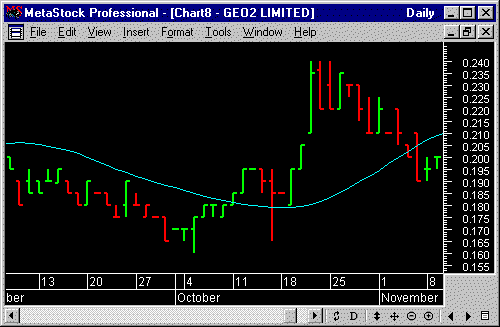|
Moving Averages - Triangular

Description
A
triangular moving average is similar to
exponential and weighted moving averages
except a different weighting scheme is
used. Exponential and weighted moving
averages assign the majority of the
weight to the most recent data. Simple
moving averages assign the weight
equally across all the data. With a
triangular moving average, the majority
of the weight is assigned to the middle
portion of the data.
A
triangular moving average is simply a
double-smoothed simple moving average.
To calculate a 9-period (similar for all
odd periods) triangular moving average:
-
Divide
9 by 2 to get 4.5
-
Round
4.5 up to 5
-
Triangular moving average (odd
periods) = (mov(mov(c,5,s)5,s)
A 12-period
(similar for all even periods) is
calculated as follows:
-
Divide
12 by 2 to get 6.
-
Add 1
to 6 to get 7*.
-
Triangular moving average (even
periods) = (mov(mov(c,6,s),7,s)
The rule is
to take the length divided by 2 as one
average, and that number plus 1 as the
second. |